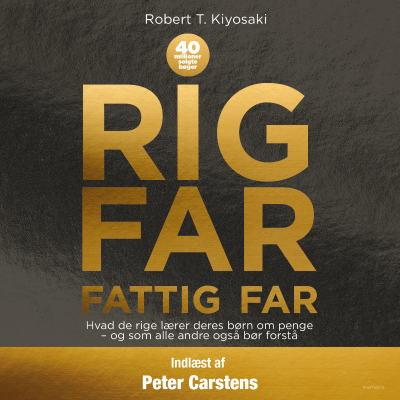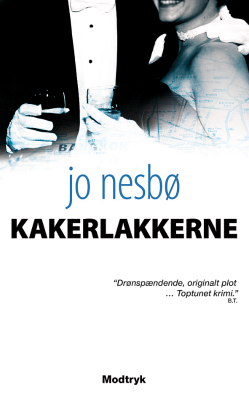
Changing Climate Times Newsletter
null-null
Personlige fortællinger & samtaler
Begrænset tilbud
1 måned kun 9 kr.
Derefter 99 kr. / månedOpsig når som helst.
- 20 lydbogstimer pr. måned
- Podcasts kun på Podimo
- Gratis podcasts
Læs mere Changing Climate Times Newsletter
ChangingClimateTimes steers a course between the dire climate news and what to do. We curate and comment upon news of the climate crisis and highlight the people doing the work of climate angels from among scientists, activists and climate communicators. changingclimatetimes.substack.com
Alle episoder
4 episoderAs the World Burns | Podcast Edition
The Amazon Rainforest Fires and the Hamburger Connection | ISSUE 22-p (for podcast), Aug. 23, 2019 | Podcast Episode 4 NOTE: The following text contains some content not featured on the podcast above, plus links and longer excerpts to articles mentioned. The podcast script is adapted from Issue 22 of Changing Climate Times [https://changingclimatetimes.substack.com/publish/post/80544]. Thanks to Kyle Vass for primo podcast coaching. (Check out his work at exchange.prx.org/user/kylevass [http://exchange.prx.org/user/kylevass]) INTRODUCTION | ‘As the World Burns’ What you’re hearing on this podcast is the sound of a thunderstorm last night that broke overtop the roof of my house. I used to love the sound of thunderstorms. Still do. But if you’re like me, if you’re tuned into the latest, greatest news about climate change, you can’t help but wonder every time you hear a storm. Especially a big one. Is this storm more extreme than the ones I used to love as a kid? Is this yet another crazy weather event, juiced by our drastically changing climate? A climate which according to an overwhelming majority of climate scientists has turbocharged forest fires, hurricanes and floods? Dammit, you can’t even enjoy a nice crackling thunderstorm without wondering if it’s a signal of the climate End Times, come to your neighborhood! Now, I don’t know if last night’s thunderstorm was just your average thunderstorm. But what IS clear, according to people who study such things for a living, is that the forest fires currently raging in the Amazon rainforest are most certainly NOT your average forest fires. Which brings us to this special edition of Changing Climate Times podcast titled “As the World Burns.” CHAPTER ONE | House Fire My friend, Ryan Hagan, also publishes a climate change newsletter. It’s called Crowdsourcing Sustainability [https://www.crowdsourcingsustainability.org/]. There was something that caught my eye in his most recent issue last Friday. He wrote: “Civilization’s house is on fire and needs to be put out ASAP.” Of course, what Ryan was talking about is the Earth at large. But within days of writing those words news of fires in the Amazon rainforest caught the world’s attention. The Amazon rainforest is so big it includes 10 percent of the world’s biodiversity and produces 20 percent of Earth's total oxygen. That’s why it is called "the Lungs of the World." Just to visualize its size, if we were able to relocate the Amazon to America, it would be as big as the 48 contiguous United States, minus Alaska and Hawaii. It sprawls across almost half the entire South American continent. The current fires are so widespread they can be seen from outer space. Here’s a time-lapse video of the fires created from NASA satellite imagery over 90 days by Joaquin Beltran [https://twitter.com/joaquinlife]: Those blood-red flares that leap up all across the heartland of South America are showing us something. Or telling us something. To borrow my friend Ryan’s phrase: ‘Hey, Civilization! Our house is on fire!!’ And what if I were to tell you that we’ve set our house on fire because we want a cheeseburger. CHAPTER TWO | Would You Like Fries with That? You’ll hear pushback from climate deniers that such fires are seasonal in the rainforest. But as Greenpeace forest campaigner Juman Kubba told the BBC in this audio piece, “Why Is the Amazon Burning?” [https://www.bbc.co.uk/sounds/play/p07lff5l?ocid=socialflow_twitter] and in this BBC article [https://bbcnewslight.uk/2019/08/23/amazon-fires-merkel-and-macron-urge-g7-to-debate-emergency/], the politics of Brazil and corporate supply lines that feed the maw of fast-food chains, play a key role in torching the Amazon. Kubba said there has been a 145 percent increase in fires in 2019 compared to last year, with the rise to power of Brazilian President Jair Bolsonaro. As the BBC piece notes: Forest fires are common from July to October. But activists say Brazilian President Bolsonaro’s policies have encouraged farmers to clear land for crops or grazing—resulting in an increase in fires. “The scale of this is new,” says Kubba. “The rate which were seeing fires is unprecedented. That’s incredible growth … This is the lungs of the planet that are on fire.” Vast sections of the Amazon rainforest are being burned out to raise crops linked to international trade. Says Kubba: “When we go to big fast-food giants like KFC, McDonalds or Burger King, the burgers that we eat will be coming from animals that are fed on animal feed which is grown in places like Brazil.” Those fast-food mega-corporations “have tremendous power to influence what is being done and not done in Brazil,” says Kubba. “So, we should be asking them to change their ways.” At the level of international trade, that also means putting a hold on trade agreements, Kubba says, until the Amazon rainforest is protected “and we really have environmental and human rights protection at the heart of trade deals.” CHAPTER THREE | Enter the boycott Whenever I talk about climate change, a common reply is: “Just tell me what to do!” Writer Nylah Burton is telling folks what to do. In a recent Twitter thread, she said: “If you want to do something about the #AmazonRainforest [https://twitter.com/search?q=%23AmazonRainforest&src=typed_query] and the killing of indigenous people, the easiest and most impactful thing you can do is stop eating beef.” Now, that sounds way too easy. But Burton is not being glib and superficial. Burton expanded upon her tweet in an article in Medium titled “The Amazon Rainforest Is Burning and You Can Help: Stop Eating Beef: The time for change is right now.” [https://tenderly.medium.com/stop-eating-beef-rainforest-burning-brazil-4aa5572b7b48] She writes: “The boycott is a tried and true [https://www.ethicalconsumer.org/ethicalcampaigns/boycotts/history-successful-boycotts]method of resistance. But if you live in Europe, China, the United States, Canada, or Australia, you may think your boycott can’t help save the Amazon rainforest, or support the Indigenous people of Brazil. “But your money—especially if you eat beef and other meats—is almost certainly funding the degradation of the Amazon rainforest. Burton mentions a report by the Articulation of the Indigenous Peoples of Brazil. [https://amazonwatch.org/assets/files/2019-complicity-in-destruction-2.pdf] It talks about consumer involvement in eating beef that may be sourced from the Amazon rainforest. The report is titled “Complicity In Destruction II: How Northern Consumers and Financiers Enable Bolsonaro’s Assault on the Brazilian Amazon.” It details the Indigenous-led call for people in the countries mentioned to boycott certain Brazilian products and businesses that invade their lands. So, let’s unpack this idea of ‘complicity.’ Complicity is “the involvement as an accomplice in a questionable act or a crime.” I don’t know about you, but I don’t think of myself as a criminal when I pick up a Happy Meal or french fries at a fast-food drive up. But stick with the argument here. The Amazon Rainforest—remember, it’s ‘The Lungs of the World’— is key to the health and well-being of the entire planet. Can YOU and I live without our lungs? I didn’t think so. So, indigenous people in the Amazon rainforest are calling on us consumers to boycott certain Brazilian products and businesses. They want us to stop supporting businesses that invade the rainforest and engage in illegal deforestation for profit. Burton’s article goes on to note: There are many Brazilian products that are contributing to deforestation, like timber and fossil fuels [https://www.newsweek.com/help-amazon-wildfires-rage-brazil-rainforest-1455656]. But beef is an incredibly easy product to boycott—barring any medical [https://www.healthline.com/health-news/meat-only-diet-eased-autoimmune-disease-symptoms#1] or cultural needs that require beef consumption, of course. CHAPTER FOUR | Getting Beyond Beef It may be a bridge too far for committed carnivores to immediately stop eating beef. But for folks trying to transition away from eating so much meat, consider this. Perhaps crack open that door by first cutting back. You could start by voting for non-beef vegetarian substitutes like Burger King’s Impossible Burger. The burger is made from soy which has its own environmental issues. The report by the Indigenous Peoples of Brazil also fingers the soy industry in Amazon deforestation. Just like beef, soy is a multibillion profit machine, generating more than $30 billion for Brazil. But we have to start somewhere and kudos to fast-food giant Burger King for baby steps. You might try the pretty amazing Beyond Burger [https://www.beyondmeat.com/products/the-beyond-burger/]. Unlike most other “veggie” hamburger-like patties made from soy, Beyond Burgers are made of pea protein. They recently released version 2.0. It’s an even fattier blend and it is plain scrumptious. And that blood in the frying pan? Elsie the Cow and tracts of rainforest were not sacrificed for your Beyond Burger. It’s beet juice. And no, I’m not on retainer for Beyond Burgers. But the company is welcome to send me any new products they launch. Isn’t it time for Beyond Tofurkey? CHAPTER FIVE | Time for Tactics The drumbeat of all this climate change news can feel overwhelming. There’s a reason there’s a growing field devoted to “eco-despair.” But taking action, however small and local—or maybe especially local, in your town, in my town—can be an antidote to such despair. You know about Banksy [http://banksy.co.uk/], the great anonymous graffiti artist whose work just appears here and there around the world? He left some graffiti on a wall in London recently. It showed a girl, holding a microphone. Scrawled on the wall were the words: “FROM THIS MOMENT DESPAIR ENDS AND TACTICS BEGIN.” And that microphone held by the kid? It’s features logo of the activist, take-it-to-the-streets group Extinction Rebellion [https://rebellion.earth/]. Young folks have been taking it to the streets for awhile now. They’re now inviting adults to join them for the planet-wide global climate strike, coming the week of Sept. 20 to 27, 2019. To a planet near you. Plan a local action where you live at globalclimatestrike.net [https://globalclimatestrike.net/]. SUBSCRIBE to this podcast wherever podcasts are listed or at our website: changingclimatetimes. substack.com [http://substack.com] | FOLLOW US on Twitter at @TimesClimate [https://twitter.com/timesclimate]. | FEEDBACK, comments and suggestions to Douglasjohnmartin AT icloud.com And remember: Change the World. Not the big one. The one in which you live. And love. Be well. | Your Curator, Concierge and Host Douglas John Imbrogno This is a public episode. If you would like to discuss this with other subscribers or get access to bonus episodes, visit changingclimatetimes.substack.com [https://changingclimatetimes.substack.com?utm_medium=podcast&utm_campaign=CTA_1]
Why Save the Earth from Climate Change?
QUICK/READ: What world do you hope to save from the devastating impacts of climate change? Changing Climate Times posted that question to Twitter a while back. We got answers from an Irish artist, an online climate denial warrior and iconic climatologist Michael E. Mann, among others. Me, I’m trying to save the kick-up-your-heels world shown in the photo below. Not to mention pawpaw ice cream from seeds once shat out by a wooly mammoth. For all the answers we got, listen to podcast 3, issue 21 of Changing Climate Times. Or read the transcript below, if that’s more your thing. If this issue was forwarded to you, subscribe to the newsletter & podcast at: changingclimatetimes.substack.com [http://changingclimatetimes.substack.com] | Subscribe to the podcast on iTunes and wherever you listen to podcasts. | Follow us on Twitter at @TimesClimate [https://twitter.com/timesclimate] Be well. | CCT Curator, Concierge and Host Douglas John Imbrogno | PS: Thanks to Kyle Vass for his primo podcast coaching! ONE | Introductions Are in Order I am trying to save a world in which my Italian grandmother dances the Tarantella with her youngest son at her 50th wedding anniversary at the American Slovak Club in Lorain, Ohio. Like a lot of journalists these days, I got washed out of a job last year. My editor handed me a white envelope in the newsroom to let me know my 30 year news career was kaput. I was a feature writer and editor for that newspaper for a long time. One of the ways I've spent my time—lots of time—since being laid off is publishing a free climate change newsletter and companion podcast called The ChangingClimateTimes. [http://changingclimatetimes.substack.com] Free as in, like, no-money-at-all free. Every day, I scour world media and social media for the latest news and views on the unfolding climate crisis. I offer my commentary or that of climate scientists, activists and communicators. I try to steer a course—as the newsletter's pitch puts it—"between the dire news and what to do.” I also add homemade climate memes [https://changingclimatetimes.substack.com/p/5-climate-memes-worth-sharing] and climate-themed cartoons [https://changingclimatetimes.substack.com/p/climate-crisis-cartoon-roundup-1] to spice the mix. Going from straight feature writing to advocacy has been a real change-up for me. At my old newspaper, I’m still (in)famous for writing the paper’s longest-ever feature. More than 100 inches! It concerned the—I will still argue—fascinating history of the ancient pawpaw tree and its custardy fruit, “How the Pawpaw Was Found, Got Lost, and Was Found Again.” [https://www.thestoryisthething.com/2018/10/08/how-the-pawpaw-was-found-got-lost-and-was-found-again/] (Don’t get me started. Did you know old-timers hung roadkill in pawpaw branches since their flowers are pollinated by flies and…) What’s do pawpaws and flies have to do with this climate crisis? TWO | Count to One Million Image from 11/27/18 New York Times article “The Insect Apocalypse Is Here.” [https://www.nytimes.com/2018/11/27/magazine/insect-apocalypse.html] Maybe you’ve heard about the recent United Nations report. It stated one million species are at risk in decades ahead from an overheated Earth. That number would likely include pawpaw trees and their delicious banana-mango-flavored fruit. And that list of one million species? Probably the average fly, too. The pawpaw fruit is born from flies pollinating the flowers. And flies are in the cross-hairs of the ‘insect apocalypse,' a pretty scary phrase that refers to the collapse of insect populations from a climate going haywire. Last year, the New York Times ran an article, “The Insect Apocalypse Is Here. What Does It Mean for the Rest of Life on Earth?” [https://www.nytimes.com/2018/11/27/magazine/insect-apocalypse.html] An insect apocalypse. The effects of this apocalypse are noticeable in our own backyards, as we sit on our porches gazing into the dark and wondering “Where did all the fireflies go?” As the conservation site firefly.org [http://firefly.org] notes: “Fireflies are disappearing from marshes, fields and forests all over the country—and all over the world. And if it continues, fireflies may fade forever, leaving our summer nights a little darker and less magical.” Pause a second to absorb that United Nations report number: 1,000,000, in all its zeroes. That is a pretty impressive screw-up by one species—to do to so many other species. If, that is, we can somehow transform our eat-the-Earth global economy. If. “If” is the linchpin in all climate crisis discourse. If — we can toss out climate change denying and delaying politicians who don’t seem to give a damn about the future of this world. Or give a damn, it even seems for their own children and grandchildren. If — we can claw back power from the coal-fired, petroleum-addict “petro-states,” small and large. Like Saudi Arabia. The United States. Venezuela. China. The Soviet Union. List your country here… THREE | Strike Now! A global climate strike is coming to planet Earth Sept. 20 to 27, 2019 Then, you get to petro-states’ partners in climate crime: the King Midas-rich 'fossil fuel-industrial complex.’ Frontline climate scientist Michael E. Mann calls this industry the wealthiest, most powerful one in human history. It holds the fate of the planet and humanity in its smudged and oily hands. The fossil fuel industrial complex wants you to be impressed by the millions of dollars they have spent showcasing their ‘commitment’ to renewable energy. Instead, focus on the bottom-line billions, earned weekly by this industry. They’re on a CO2-fueled, permafrost-melting, extreme-weather intensifying bender. If any of this news sounds shocking to you—it’s shocking to me, even after 21 issues of Changing Climate Times—then it might be time to hit the streets for the planet-wide global climate strike coming the week of Sept. 20 to 27, 2019. Greta Thunberg’s solo school strike (the one that began in Stockholm, Sweden in late 2018) has inspired global youth climate strikers to take action. Let’s join them—mark the week of September 20 to 27 on your calendars— There are more than 150 countries where youth strikes now take place every Friday. Plan a local action where you live at globalclimatestrike.net [https://globalclimatestrike.net/]. Strike now, you might say. While the planet is hot. FOUR | Pawpaws and Mamaws Pawpaws eaten today may have originated from wooly mammoth poop. | Photo: Indiana Public Media Recently, I posed a question on the @TimesClimate [https://twitter.com/timesclimate] timeline with the hashtag #ClimateTwitter. Why do this work of climate science? Of climate activism? Of climate communication? Why do it, given the long odds of transforming the fossil fuel industry? I, mean, really. At an intensely personal level. Why do you do it? It’s a lot of work. Even for weekend warrior climate communicators like myself. For the high-profile, full-time climate science professionals and activists, it comes with no small amount of grief. For Greta Thunberg [https://changingclimatetimes.substack.com/p/the-kids-are-alright-the-youngster], her grief isn’t just watching the planet she loves turn to an actual hell (complete with fire and brimstone). Greta is routinely portrayed as a pawn of avaricious parents. Climate change deniers pan her as a pawn to some economy-destroying, socialist cadre of United Nations globalism. High-profile—heck, even medium- and low-profile climate figures—face powerful pushback from fossil fuel industry minions and climate science deniers This pushback includes death threats and character assassination. Climate scientist Katherine Hayhoe, who hosts the popular “Global Weirding” podcast [https://www.youtube.com/channel/UCi6RkdaEqgRVKi3AzidF4ow], says she has been likened to “the handmaiden of the Antichrist.” So, here’s the question I tweeted to the #climatechange cognoscenti: Dear #climatetwitter: What world are you trying to save with your climate work? To start off my list of the world I was trying to save, I posted to Twitter a photo of my Calabrian-born Italian grandmother, shot decades ago at the American Slovak Club in Lorain, Ohio. She was a dear, oversize woman—a big waddling lovable penguin who always wanted to put some meat on my skinny bones. The photos shows her in a blue dress, kicking up her heels as she dances the Italian Tarantella beside her youngest son, who is also kicking up his heels in a suit and tie. I wrote in my Twitter post: I want to preserve a world where my Italian Grandma Catherine dances the Tarantella with her sons at her 50th wedding anniversary. But let’s go back, way back. Before my Grandma Catherine’s birth [https://thewebtheater.com/2018/08/mini-doc-the-key-to-my-grandfathers-house/] on a steep southern Italian hillside. Did you KNOW the pawpaw is so old that 50 million years ago [https://www.thestoryisthething.com/2018/10/08/how-the-pawpaw-was-found-got-lost-and-was-found-again/] giant North American sloths, wooly mammoths, and saber-toothed tigers ate pawpaws. Then, they shat pawpaw seeds far and wide across what we now call America, establishing future pawpaw patches? So, I also fight to preserve a world where you can buy a pawpaw ice cream cone, made from local West Virginia pawpaws at Ellen’s Homemade Ice Cream shop [https://ellensicecream.com/] in downtown Charleston, W.Va. From wooly mammoth to a crisp waffle cone. Now, that’s a world worth saving. (Like I said, don’t get me started on pawpaws.) FIVE | ‘Climate Is Killing Us Already’ Artist Elida Malques wants to be able to make whistles with apricot stones for every Spring to come. | Image by Elida Malques Other answers rolled in on Twitter. As a 2017 Guardian commentary once noted [https://www.theguardian.com/commentisfree/2017/sep/14/africa-us-haiti-climate-change-black-lives-matter]: “From Africa to the US to Haiti, climate change is a race issue,” among other things: “Climate change and the extreme weather events it produces disproportionately affects black and poor communities,” that commentary noted. So, a response came in from the Twitter account Tamara To’L [https://tolesolaughlin.com/] . Tamara Toles O’Laughlin describes herself as an analyst and environmental “advocate for people and planet.” She responded with a happy family photo of a smiling kid and two adult women. She added an often missing perspective of how climate change is already walloping the non-powerful and non-wealthy. As she wrote: “I’m trying my best to lift up the diaspora of the black community. Climate is killing us already, taking the little we have, swallowing our homes, hope and land, it’s a multiplier that breaks and separates our families in ways set and served up by the status quo.” Another response came from the Twitter account ‘Elidasaur [https://twitter.com/elidasaur].’ Elida Malques is a visual artist and teacher based in Bray, Ireland. What world was she trying to save? She answered: “I want to be able to make whistles with apricot stones, every Spring to come. “ Whoa, wait! ‘How do you do make a whistle from an apricot pit?’ I asked back. Being an artist, she answered with the illustrated guide above. PS: I dearly hope someone will add her apricot pit whistle-making instructions to the Wikipedia entry for apricot. SIX | ‘Happy kids and unbroken adults’ A Twitter climate change warrior friend named Peter, who runs the Twitter account ‘Peter Believes in Science Not Dogma,’ [https://twitter.com/ScienceNotDogma] answered the question. Peter’s account toils at the front-lines of climate science denialists on Twitter. He spends endless hours refuting and engaging with this denialists. Peter patiently goes mano-a-mano with deniers. May the gods bless him. He flags bots and hopeless trolls. He tries to engage with the engageable. Peter is not a climate scientist, but a private citizen. According to one of Peter’s tweets, he decided in 2018 “to stop watching trolls attack climate science and DO something about it.” “I can only relate my own personal experience defending science against trolls as well as educating the public,” he writes. “I'm not paid to spend my time on social media in any way, nor do I make any money here.” But Peter’s response to ‘What world are you trying to save?’ had nothing to do with climate science denial: “The world I grew up in is one of happy illusions, but it's still a good one. We NEED a world of happy kids and whole, unbroken adults. I want to help CREATE a world where everyone is able to reach their potential, and to do so without curtailing that of others—a tall order.” Two responses to the question were more melancholic. A French woman responded from the Twitter account @arraigneedusoir [https://twitter.com/arraigneedusoir]: I want to preserve a world where desert islands hide treasures, not abandoned cities or traces of people and animals long gone. A response arrived from Byron Williston, whose Twitter account announces: “Philosophy professor, climate ethicist, Gaia-smitten extinction rebel. Egregious stupidity blocked.” His response was more tough-love maudlin. He name-checked Cormac McCarthy’s 2006 Pulitzer Prize-winning, post-apocalyptic novel, “The Road”: I’d be happy if the whole bloody thing doesn’t just become The Road. Low expectations. EIGHT | Save the Leaping Dolphins Michael E. Mann is determined to have his family and descendants be able to return and again marvel at the natural wonders of the Floria Keys. Climate scientist Michael E. Mann [https://michaelmann.net/] responded to my tweet. He posted an excerpt from the epilogue to his 2013 book, “The Hockey Stick and the Climate Wars: Dispatches From the Front Lines.” [https://www.amazon.com/Hockey-Stick-Climate-Wars-Dispatches/dp/0231152558] The book details the relentless, bare-knuckled attacks on the early work on climate change by Mann and fellow scientists.Their research produced the famous “hockey stick graphic.” [https://changingclimatetimes.substack.com/p/talk-climate-change-to-me] The graphic earned a global audience with a 2001 U.N. report on climate change. The graphic revealed how fast our planet’s temperature has risen in contemporary times, compared to the stable climate of the past 1,000 years. The hockey stick graphic became an iconic climate change image. As one writer put it, the “hockey stick” was not just scientific data made shockingly clear. But an “implied threat to those who oppose governmental regulation and other restraints to protect the environment and planet.” But Mann did not post graphics or data in response to my question: What world are you trying to save with your climate work? He sent along a poignant excerpt from the epilogue to “The Hockey Stick and the Climate Wars,” about a visit with his young daughter to the Florida Keys. Here is the excerpt in full: My four-year-old daughter was entranced by the Keys—the mangrove forests, the sonorous birds, the leaping dolphins, the coral reefs with their exotic and colorful fish. It was unlike anything she had ever seen. In fact, three generations of my family—my parents, my wife and me, and our daughter—were all sharing this mutual opportunity to enjoy one of Earth’s true wonders—and authentic key lime pie. I didn’t have the heart to tell our daughter that this island paradise was under assault—by us. That the warming and increasingly acidic ocean was slowly killing the reefs, that increasingly destructive hurricanes would subject them to further insult, and that projected sea level rise over the next few decades under “business as usual” emissions would literally submerge vast regions of the Florida Keys, including the wildlife refuges home to so many of its unique species. Nor do I have the heart to tell her now that the majestic scene of giraffes and elephants looming in the foreground of Ernest Hemingway’s “Snows of Kilimanjaro” may soon become a casualty of our warming of the planet. I am determined to do whatever I can to make sure that it will be possible for us to return decades from now—my wife and me, our daughter, her children, and perhaps theirs—to again marvel at these natural wonders. While slowly slipping away, that future is still within the realm of possibility. It is a matter of what path we choose to follow. I hope that my fellow scientists—and concerned individuals everywhere—will join me in the effort to make sure we follow the right one. NINE | What World Do You Hope to Save? If you’d like to respond to the question, I’ll post the best answers in a future edition of Changing Climate Times newsletter. So ponder this: What world are you trying to save? Respond in the comments below or at changingclimatetimes.substack.com [http://changingclimatetimes.substack.com] or to douglasjohnmartin AT icloud.com. If this issue was forwarded to you, subscribe to the newsletter & podcast at: changingclimatetimes.substack.com [http://changingclimatetimes.substack.com] | Subscribe to the podcast on iTunes and wherever you listen to podcasts. | Follow us on Twitter at @TimesClimate [https://twitter.com/timesclimate] Be well. CCT Curator, Concierge and Host Douglas John Imbrogno | PS: Thanks to Kyle Vass for his primo podcast coaching! This is a public episode. If you would like to discuss this with other subscribers or get access to bonus episodes, visit changingclimatetimes.substack.com [https://changingclimatetimes.substack.com?utm_medium=podcast&utm_campaign=CTA_1]
Changing Climate Times Podcast 2 | Memes To Share
Welcome to Episode Two of the new Changing Climate Times podcast. This episode describes the back-story behind five climate change memes our Climate MemeWorks released into the social media-verse recently. The episode is inspired by ISSUE 20 of our newsletter, “5 Climate Memes Worth Sharing.” [https://changingclimatetimes.substack.com/p/5-climate-memes-worth-sharing] Below are the memes, which you’re are welcome to borrow, steal and release into the wild. One role CCT aims to fill is to sort through the dizzying amount of climate change coverage. And to lift up essays, articles, quotes and work worth a longer look. Our memes quickly highlight important points in the evolving climate crisis. They are also pointers to deeper content. Missed Podcast Episode One? CHANGING CLIMATE TIMES PODCAST 1 : “The Big and the Little of Climate Change” [https://changingclimatetimes.substack.com/p/changing-climate-times-podcast-the] SUBSCRIBE to the Changing Climate Times newsletter and podcast: changingclimatetimes.substack.com [http://changingclimatetimes.substack.com]. FOLLOW US ON TWITTER: @TimesClimate [https://twitter.com/TimesClimate] BE WELL. And save the world. Not the big one—the one in which you live and love. Changing Climate Times Concierge and Curator Douglas John Imbrogno | douglasjohnmartin AT icloud.com ONE | “We cannot be radical enough” TWO | ‘The Power Is Not Yours But Ours’ THREE | The Game of Pretend FOUR | Who’s the Extremist Here? FIVE | Go Global, Strike Local PS | You Promised Cartoons This is a public episode. If you would like to discuss this with other subscribers or get access to bonus episodes, visit changingclimatetimes.substack.com [https://changingclimatetimes.substack.com?utm_medium=podcast&utm_campaign=CTA_1]
Changing Climate Times Podcast: The Big & Little of Climate Change, Show 1
View of Mount Everest from Base Camp, Khumjung, Nepal | Martin Jernberg, unsplash.com [https://unsplash.com/@martinjernberg] WELCOME: This is the debut podcast of Changing Climate Times, a free newsletter that curates and comments on the latest news and views on the climate crisis. We steer a course between the dire news and what to do. This first episode of our new podcast, hosted by Douglas John Imbrogno, actually picks up with Issue 19 of the newsletter, which launched November 2018. ISSUE 19: Who you gonna trust on the climate crisis? How about a Sherpa who has ascended and descended Mount Everest 21 times? “Less snow and more rocks,” and “glaciers all over the mountain … melting,” he says. | And ‘tick-tick-tick’ is the sound of a pandemic time-bomb of tick-borne disease, fueled by a warming climate. | Plus, the Trump Administration considered as the world’s greatest climate threat (next to its partner in climate-crime, the fossil-fuel industrial complex.) | Subscribe at changingclimatetimes.substack.com [http://changingclimatetimes.substack.com]. Follow on Twitter at @TimesClimate [https://twitter.com/TimesClimate]. This is a public episode. If you would like to discuss this with other subscribers or get access to bonus episodes, visit changingclimatetimes.substack.com [https://changingclimatetimes.substack.com?utm_medium=podcast&utm_campaign=CTA_1]
Vælg dit abonnement
Begrænset tilbud
Premium
20 timers lydbøger
Podcasts kun på Podimo
Gratis podcasts
Opsig når som helst
1 måned kun 9 kr.
Derefter 99 kr. / måned
Premium Plus
100 timers lydbøger
Podcasts kun på Podimo
Gratis podcasts
Opsig når som helst
Prøv gratis i 7 dage
Derefter 129 kr. / måned
1 måned kun 9 kr. Derefter 99 kr. / måned. Opsig når som helst.

































